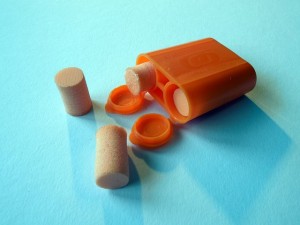 Print a Sign-In Sheet | Spanish Version
Print a Sign-In Sheet | Spanish Version
Equipment used in many work settings can produce high levels of noise. Over time, exposure to sound levels greater than 85 decibels (dBA) can cause hearing loss. If you have to raise your voice to be heard by someone less than three feet away there may be a need for hearing protection. Through the use of engineering, administrative controls and personal protective equipment, employee noise exposure can be controlled. Examples of controls are:
- Redesigning or enclosing machinery;
- Installing acoustical barriers or panels;
- Limiting exposure time to the noise source; and
- Wearing hearing protection.
It is necessary to determine which employees are exposed to high sound levels. In determining which employees are at risk, a safety professional will use one of several measuring instruments including:
- Sound level meter;
- Noise dosimeter; or
- Octave band analyzer.
If engineering and administrative controls are not possible then it will be necessary to use personal protective equipment (PPE). PPE can be effective when used correctly, so it is mandatory to train employees on the proper use of hearing protection devices. There are several different types of hearing protection devices available including:
- Canal caps;
- Earplugs; and
- Ear muffs.
In areas that measure at extremely high sound levels it may be necessary to use both earplugs and ear muffs. If this combination is used, it is important to insure that employees in these areas can still hear crucial communications such as warning horns.
KEMI does not assume liability for the content of information contained herein. Safety and health remain your responsibility. This information is to be used for informational purposes only and not intended to be exhaustive or a substitute for proper training, supervision or manufacturers’ instructions/recommendations. KEMI, by publication of this information, does not assume liability for damage or injury arising from reliance upon it. Compliance with this information is not a guarantee or warranty that you will be in conformity with any laws or regulations nor does it ensure the absolute safety of any person, place or object, including, but not limited to, you, your occupation, employees, customers or place of business.

